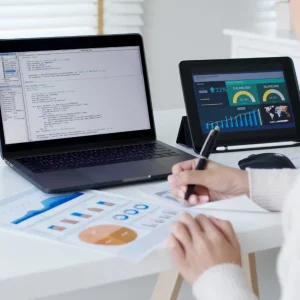Software giant Microsoft has surprised analysts with quarterly results that were much better than expected.
For the past three months, analysts had been trimming back profit targets, put down to fears over retiring CEO Steve Ballmer’s restructuring and the acquisition of Nokia’s handset business.
But Microsoft has turned in some good figures, posting a 16% jump in revenue to $18.5bn (£11.4bn) and a leap in profit to $5.24bn from $4.47bn.
Microsoft, which Ballmer has led for has led for over 13 years, put the growth down to the commercial side of the business, reporting a 10% rise in revenue after selling Office and server software to businesses.
However, the growth wasn’t helped by company’s consumer and hardware group, which saw revenue rise just 4%, due to poor sales for the Windows system and personal computers.
Under Ballmer’s direction, Microsoft has failed to take enough risk in the smartphones and tablets market, clinging too keenly to Office and Windows.
Although Windows software may still be the number one choice for desktop and laptop computers, sales of Windows software to PC makers including Dell and HP fell 7% in the quarter.
What’s more, PC shipments worldwide fell 8.6% last quarter, according to analyst firm Garnter.
Most people today are now using smartphones and tablets and although Microsoft’s Surface sales grew to $400m, the company still has a long way to cover the $900m charge of unsold Surface RT inventory.
Ballmer’s departure gives the firm a fresh start to take back control of the sector it once led. A new leader will have to make sure Microsoft’s focus shifts towards mobile devices and internet services.
Is the recent launch of the Surface 2 and Surface Pro 2 bringing the company in the right direction?






